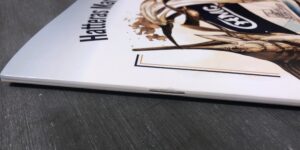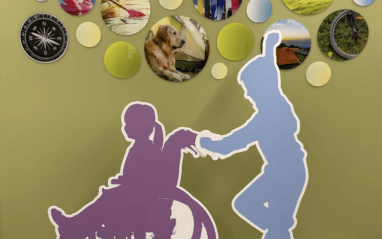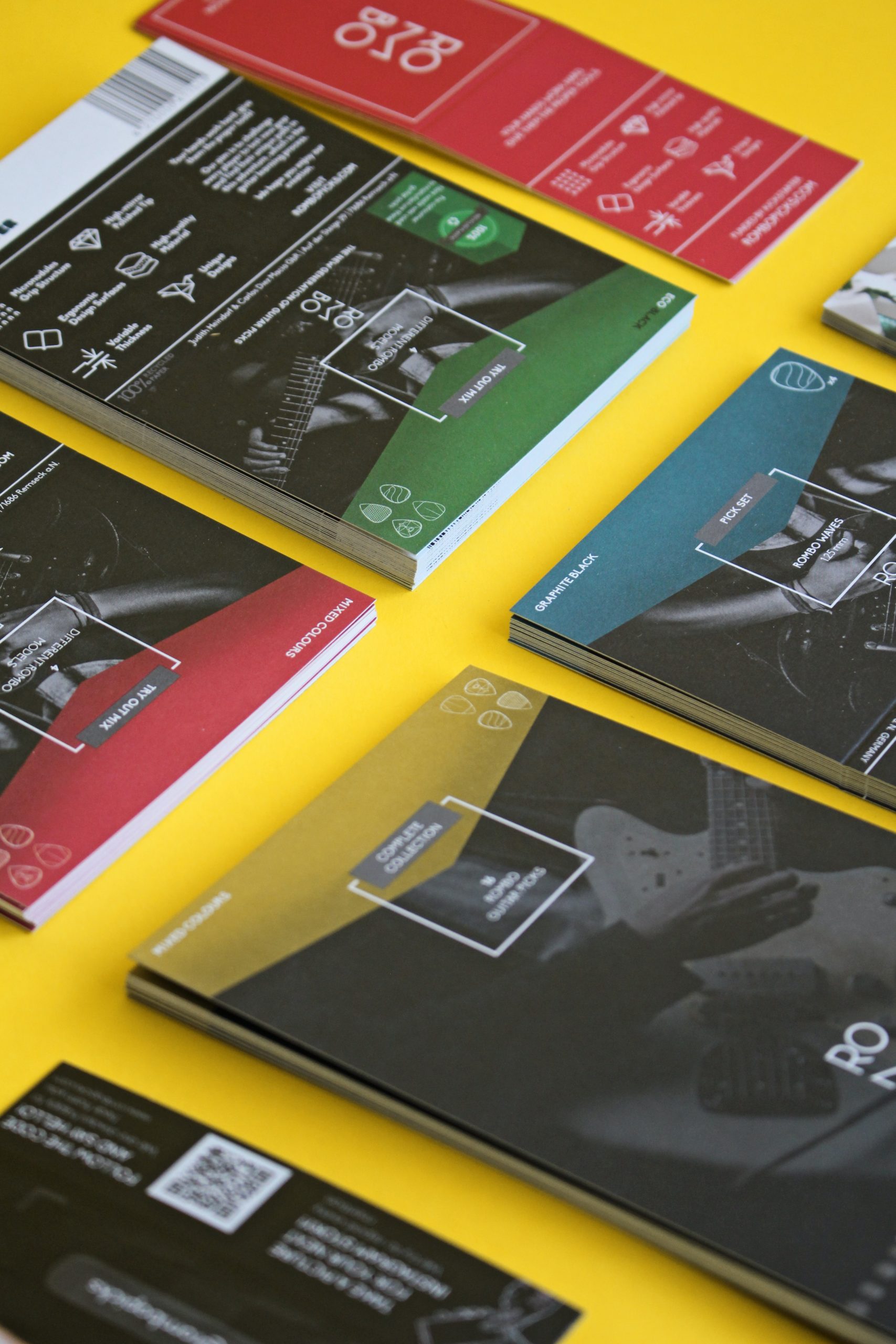The All Purpose Binding Technique
When it comes to multiple page documents, print buyers have a number of binding options. This post describes saddle-stitching, the most common and cost-effective booklet binding method. A saddle stitched booklet consists of flat sheets that are folded in half, collated and nested into each other, then stapled through the fold. Lots of magazines are bound in just this fashion. The next time you see staples on the folded, outside edge of a booklet, catalog, or magazine, take a peek and you will understand.



This is where it gets tricky….
What confuses people about saddle stitched booklets is the way the pagination works. If you think of each side of a flat sheet of paper as a separate single page, it makes sense to think of that sheet as a two page document. Now if you fold the same sheet in half, each quadrant of the sheet becomes a page. A two page document folded in half creates two panels, each with a front and back. Two fronts and two backs equal four total pages. Get it? As a result, when you nest folded sheets into one another, the number of folded sheets multiplied by four gives you the total page count. Two folded sheets stapled together is an eight page booklet, three folded sheets results in a twelve page document and so on.

These four folded sheets become 16 pages when stitched in the fold.
Saddle stitched booklets must follow the rule of four.
Consequently, make sure your booklet is divisible by four when design it. Sometimes you will need to add blank pages to make this work. A common trick is to print the word “notes” on the blank pages or to create some reference pages, like a bibliography or glossary. Don’t forget that the cover to a saddle stitched booklet is also a four page document. Instead of numbered pages, it consists of an outside front cover, inside front cover, outside back cover and inside back cover.
Don’t judge a booklet by its cover….
A “self-cover booklet” is a booklet in which all of the pages are printed on the same weight stock, typically a lightweight text stock. On the other hand, a “plus cover booklet” has a durable, heavier weight cover stock for the cover and the remaining pages are printed on text stock. A 16 page self cover booklet consists of sixteen pages of text or four folded four page sheets. A sixteen page plus cover booklet consists of a cover and 16 pages of text, for a total of 20 pages. Sixteen pages PLUS cover, get it? ( the cover is four pages, remember? )
Cost Effective
Saddle stitching is the most popular and cost-effective binding option. As a result, we can produce saddle stitched booklets in many different ways using many different pieces of equipment. In fact, one of our digital printing presses prints, collates, folds, and stitches completed booklets in one continuous operation.
A really cool option for saddle stitched booklets….
Square Back saddle stitching is an interesting option available on our digital press. The collated pages are formed into a blocked edge and then stitched along that edge. This is helpful when producing thicker booklets and helps them lay flatter.

Notice the squared shape of the spine and the centering of the staple.
One final consideration:
We offer other binding options for thicker books or if you want to create a different look for your booklet. Plastic coil binding, twin wire binding, and perfect binding are all excellent options for your documentation needs.






